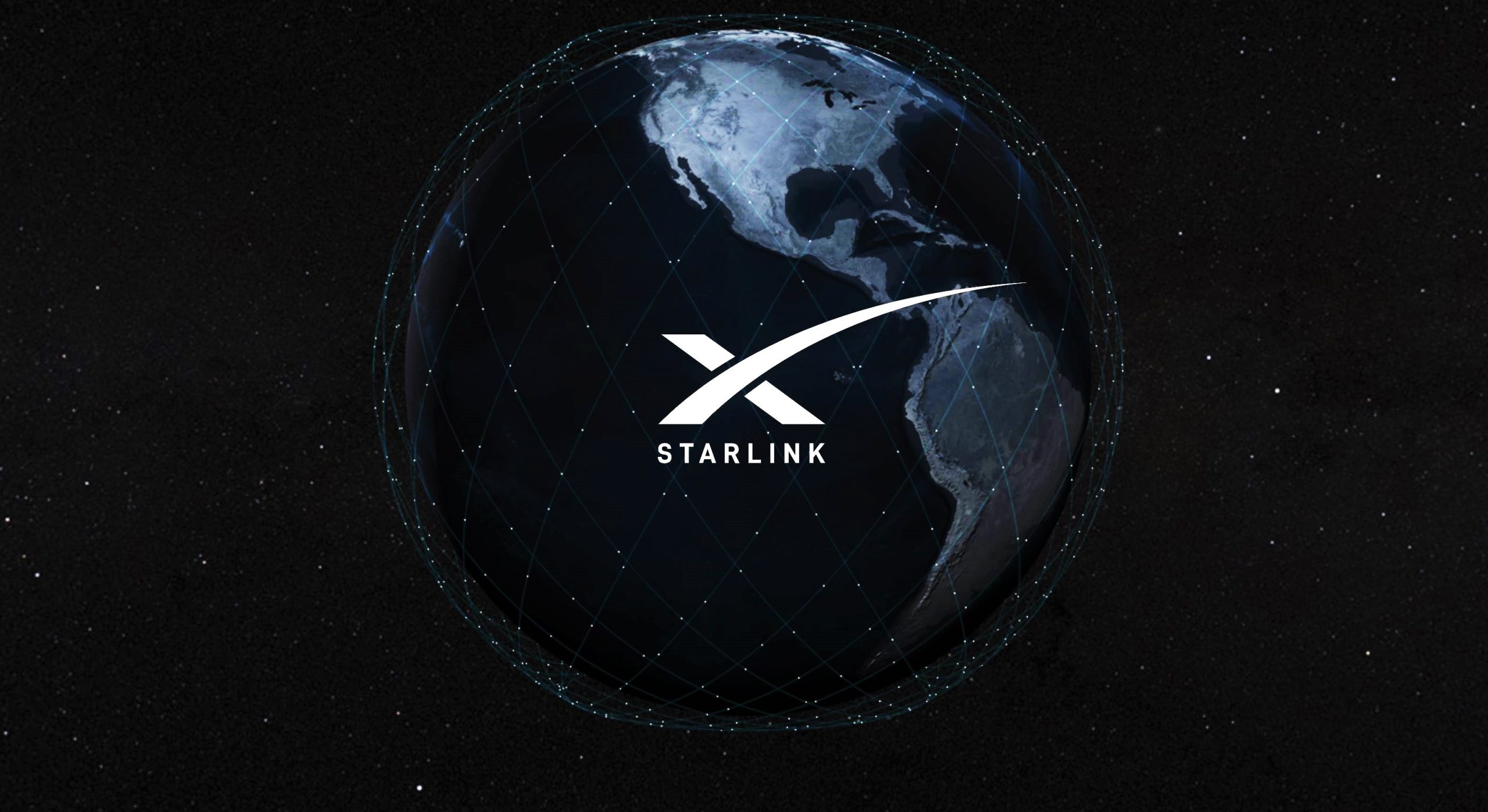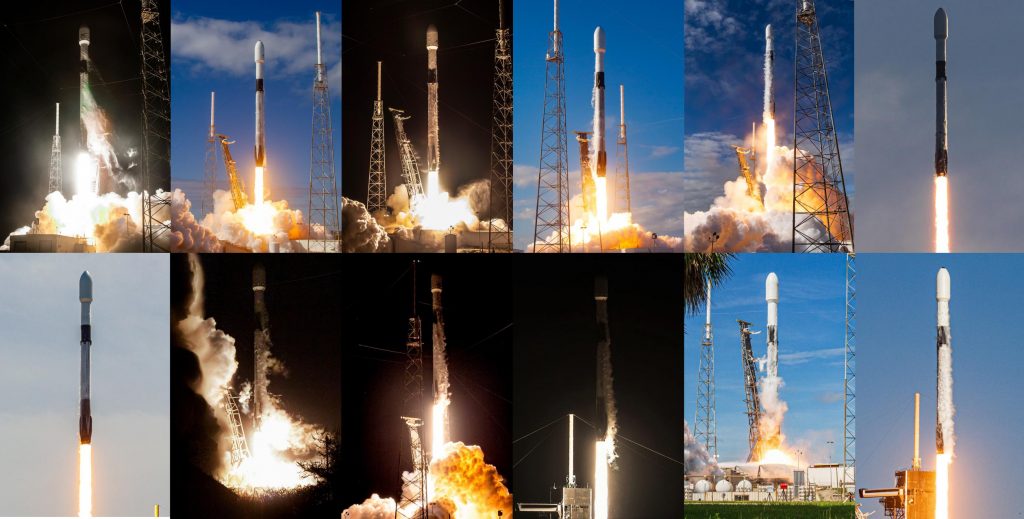

News
SpaceX Starlink partners with Microsoft Azure to deploy cloud computing anywhere
Microsoft Azure has announced a partnership with SpaceX that will give customers the ability to both access and deploy cloud computing capabilities anywhere on Earth with the help of Starlink internet.
Ultimately designed with anywhere from ~4,400 to ~40,000 operational satellites in mind, SpaceX’s Starlink constellation aims to connect users to the internet where existing access is either too expensive, limited, or completely unavailable. Of course, however, connecting the world’s unconnected is an immense and challenging aspiration – one that is unlikely to be one of the Starlink constellation’s first major uses.
As CEO Elon Musk has been keen to regularly note, the real challenge of SpaceX’s Starlink satellite internet project is ultimately ensuring that the constellation doesn’t join the graveyard of bankrupt companies that came before it. For better or worse, that will necessitate close relationships with as many premium enterprise-class customers as possible. With its estimated 2020 market cap of ~$370 billion expected to grow to ~$800 billion or more by 2025, cloud computing is one such potentially lucrative application.
To better exploit the benefits offered by the kind of blanket connectivity Starlink may soon offer, Microsoft has developed its own Azure Modular Datacenter (MDC), essentially a data center built into a mobile, satellite-connected shipping container. Customers can choose to either use the MDC as a wholly independent datacenter or connect it to one or more satellite constellations, Starlink included. With what a SpaceX executive recently described as dual parabolic antennas, an MDC could likely have access to gigabit-class internet connectivity with latency comparable to fiber anywhere on Earth.
According to Microsoft, possible scenarios where an MDC would be valuable include “mobile command centers, humanitarian assistance, military mission needs, mineral exploration, and other use cases requiring high intensity, secure computing.” Several Azure Mobile Datacenters have already been deployed and are being trialed by private sector companies and the US military.
Likely less than coincidental, Microsoft Azure’s Starlink partnership comes around the same time as Amazon has begun to peel back the curtains on Project Kuiper, a low Earth orbit (LEO) satellite internet constellation almost indistinguishable from Starlink. Lead and largely staffed by former Starlink executives and employees, Project Kuiper aims to deploy a constellation of ~3200 small, interlinked communications satellites – a goal Amazon has pledged at least $10 billion to achieve.
Somewhat unsurprisingly, Kuiper – lead by executives SpaceX CEO Elon Musk personally fired in 2019 for moving too slowly – has no set schedule or indication of early prototype development and is effectively 3-5 years behind SpaceX, OneWeb, and other prospective constellation operators from the get-go.

An IEEE Spectrum article offers an excellent summary of the web services. logistics, and online shopping giant’s most likely motivation behind investing so much money in a satellite constellation that is – at best – years behind.
“‘With Amazon, it’s a whole different ballgame,’ says Zac Manchester, an assistant professor of aeronautics and astronautics at Stanford University. ‘The thing that makes Amazon different from SpaceX and OneWeb is they have so much other stuff going for them.’ If Kuiper succeeds, Amazon can not only offer global satellite broadband access—it can include that access as part of its Amazon Web Services (AWS), which already offers resources for cloud computing, machine learning, data analytics, and more.”
Michael Koziol – IEEE Spectrum – 17 August 2020
In other words, Amazon likely believes that its potential advantages are so strong and so unmatched that it doesn’t matter if it’s years late to the party. On the other hand, it could also be the case that Amazon – and Amazon Web Services in particular – perceives a lack of the capabilities offered by a high-bandwidth satellite internet constellation to be such an existential threat that the company has no choice but to try to enter the fray.
As such, SpaceX’s partnership with Microsoft Azure Cloud Services is a direct shot across Amazon’s bow, demonstrating that even if Project Kuiper manages to begin operational satellite launches in just a year or two, the company will immediately face experienced, organized competition. There is some level of irony in the fact that, purely out of corporate spite, Amazon will now likely never become a Starlink customer to avoid helping a direct competitor, meaning that AWS will be consciously putting itself at a competitive disadvantage for years to come by waiting for Project Kuiper.

News
Tesla gets a win in Sweden as union withdraws potentially “illegal” blockade
As per recent reports, the Vision union’s planned anti-Tesla action might have been illegal.

Swedish union Vision has withdrawn its sympathy blockade against Tesla’s planned service center and showroom in Kalmar. As per recent reports, the Vision union’s planned anti-Tesla action might have been illegal.
Vision’s decision to pull the blockade
Vision announced the blockade in early December, stating that it was targeting the administrative handling of Tesla’s facility permits in Kalmar municipality. The sympathy measure was expected to start Monday, but was formally withdrawn via documents sent to the Mediation Institute and Kalmar Municipality last week.
As noted in a Daggers Arbete report, plans for the strike were ultimately pulled after employer group SKR highlighted potential illegality under the Public Employment Act. Vision stressed its continued backing for the Swedish labor model, though Deputy negotiation manager Oskar Pettersson explained that the Vision union and IF Metall made the decision to cancel the planned strike together.
“We will not continue to challenge the regulations,” Petterson said. “The objection was of a technical nature. We made the assessment together with IF Metall that we were not in a position to challenge the legal assessment of whether we could take this particular action against Tesla. Therefore, we chose to revoke the notice itself.”
The SKR’s warning
Petterson also stated that SKR’s technical objection to the Vision union’s planned anti-Tesla strike framed the protest as an unauthorized act. “It was a legal assessment of the situation. Both for us and for IF Metall, it is important to be clear that we stand for the Swedish model. But we should not continue to challenge the regulations and risk getting judgments that lead nowhere in the application of the regulations,” he said.
Vision ultimately canceled its planned blockade against Tesla on December 9. With Vision’s withdrawal, few obstacles remain for Tesla’s long-planned Kalmar site. A foreign electrical firm completed work this fall, and Tesla’s Careers page currently lists a full-time service manager position based there, signaling an imminent opening.
News
Tesla Semi program Director teases major improvements

Tesla Semi Program Director Dan Priestly teased the major improvements to the all-electric Class 8 truck on Thursday night, following the company’s decision to overhaul the design earlier this year.
Priestley said he drove the Semi on Thursday, and the improvements appear to be welcomed by one of the minds behind the project. “Our customers are going to love it,” he concluded.
Just drove the redesigned Semi. Our customers are going to love it. https://t.co/KZ88sf1CDL
— Dan Priestley (@danWpriestley) December 19, 2025
The small detail does not seem like much, but it is coming from someone who has been involved in the development of the truck from A to Z. Priestley has been involved in the Semi program since November 2015 and has slowly worked his way through the ranks, and currently stands as the Director of the program.
Tesla Semi undergoes major redesign as dedicated factory preps for deliveries
Tesla made some major changes to the Semi design as it announced at the 2025 Annual Shareholder Meeting that it changed the look and design to welcome improvements in efficiency.
Initially, Tesla adopted the blade-like light bar for the Semi, similar to the one that is present on the Model Y Premium and the Cybertruck.
Additionally, there are some slight aesthetic changes to help with efficiency, including a redesigned bumper with improved aero channels, a smaller wraparound windshield, and a smoother roofline for better aero performance.
All of these changes came as the company’s Semi Factory, which is located on Gigafactory Nevada’s property, was finishing up construction in preparation for initial production phases, as Tesla is planning to ramp up manufacturing next year. CEO Elon Musk has said the Semi has attracted “ridiculous demand.”
The Semi has already gathered many large companies that have signed up to buy units, including Frito-Lay and PepsiCo., which have been helping Tesla test the vehicle in a pilot program to test range, efficiency, and other important metrics that will be a major selling point.
Tesla will be the Semi’s first user, though, and the truck will help solve some of the company’s logistics needs in the coming years.
News
Tesla dominates in the UK with Model Y and Model 3 leading the way

Tesla is dominating in the United Kingdom so far through 2025, and with about two weeks left in the year, the Model Y and Model 3 are leading the way.
The Model Y and Model 3 are the two best-selling electric vehicles in the United Kingdom, which is comprised of England, Scotland, Wales, and Northern Ireland, and it’s not particularly close.
According to data gathered by EU-EVs, the Model Y is sitting at 18,890 units for the year, while the Model 3 is slightly behind with 16,361 sales for the year so far.
The next best-selling EV is the Audi Q4 e-tron at 10,287 units, lagging significantly behind but ahead of other models like the BMW i4 and the Audi Q6 e-tron.
GOOD NEWS 🇬🇧 Tesla is absolutely crushing the UK electric vehicle market in 2025 💥
The numbers are in, and the dominance is clear. With an impressive amount of 42,270 vehicles delivered year-to-date, the brand now commands a solid 9.6% market share of the total auto market 🆒… pic.twitter.com/dkiGX9kzd0
— Ming (@tslaming) December 18, 2025
The Model Y has tasted significant success in the global market, but it has dominated in large markets like Europe and the United States.
For years, it’s been a car that has fit the bill of exactly what consumers need: a perfect combination of luxury, space, and sustainability.
Both vehicles are going to see decreases in sales compared to 2024; the Model Y was the best-selling car last year, but it sold 32,610 units in the UK. Meanwhile, the Model 3 had reached 17,272 units, which will keep it right on par with last year.
Tesla sold 50,090 units in the market last year, and it’s about 8,000 units shy of last year’s pace. It also had a stronger market share last year with 13.2 percent of the sales in the market. With two weeks left in 2025, Tesla has a 9.6 percent market share, leading Volkswagen with 8 percent.
The company likely felt some impact from CEO Elon Musk’s involvement with the Trump administration and, more specifically, his role with DOGE. However, it is worth mentioning that some months saw stronger consumer demand than others. For example, sales were up over 20 percent in February. A 14 percent increase followed this in June.








